
Galium aparine is a distinctive herbaceous annual weed with a number of common names including cleavers, bedstraw, catchweed bedstraw, grip grass, stickywilly, and others. This fast-growing plant in the madder famliy (Rubiaceae), native to the northern hemisphere (North America and Eurasia), occurs in all US states except Hawaii, and in most provinces of Canada and northern Mexico. It can grow in a variety of habitats, including forests and woodlands, meadows, prairies, disturbed areas, and cultivated crops. It is commonly found in low shrubby vegetation, arable fields, and in gardens with moist soils. It causes problems in crops during harvesting when bedstraw becomes tangled with the crop or equipment.
This plant supposedly has many medicinal uses. The dried and roasted fruits can used to make a coffee substitute (this plant is in the same family as coffee, Coffea spp.). The young leaves can be eaten raw or cooked.
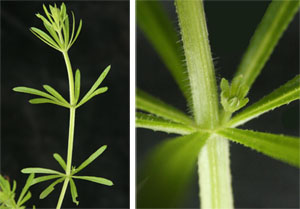
The leaves and stems of G. aparine have fine hook-like hairs (similar to Velcro®) that readily adhere to clothing and animal fur, giving rise to some of its common names. Because they cling to each other, the plants don’t mat down easily when used as a mattress filling, giving rise to the name bedstraw. The scratchy hairs can be mildly irritating to those with sensitive skin. The simple linear leaves are borne in whorls of six to eight along the square stems with few branches. The tip of each leaf has a sharp firm point.

Seeds germinate very early in the spring, to produce a gangly plant with long stems. Plants can grow up to 6 feet but can’t stand up on their own, so they often use other upright species for support, clambering over the other vegetation with the aid of hooked bristles at the stem angles. Left on their own, they remain low and sprawling, forming dense tangles only a foot or so in height, shading out any smaller plants they grow over. In some areas, this species grows as a winter annual, germinating in the fall, and overwinter as a small plant, to grow quickly in spring.

In early spring to summer, tiny, inconspicuous pale green or white flowers are borne in the leaf axils or terminally. Each inflorescence (a cyme) has 3 to 5 flowers. Each flower is only 2-3 mm across, with four petals. Once pollinated by flies or beetles, spherical fruits of two nearly round halves are produced. Each fruit half contains a single small, spherical, oval or kidney shaped seed. The gray to brown seeds are 1-4 mm in diameter and are covered with small tubercles. The hooked bristles create a burr, which is easily dispersed on animal fur or clothing. Individual plants produce 300-400 seeds, although some specimens will produce many more.

Seeds remain viable in the soil for only a couple of years. They survive passage through the digestive tracts of cattle, horses, pigs, goats, and birds, so bringing uncomposted manure into a garden may inadvertently introduce this weed.
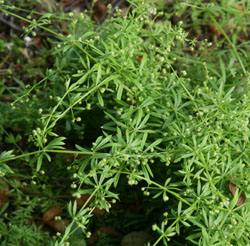
This weed is not difficult to control if pulled or hoed out while small, before flowering and seed production commences. G. aparine has a shallow root system, with a branching taproot. However, it is weakly connected to the stem so that when weeding, the roots often remain behind (and can grow again) when the tops are pulled. The brittle stems break easily, so it is difficult to remove an entire plant intact. Nearby fragile plants may be damaged as it is pulled if its leaves or stems stick to the tender plants.
– Susan Mahr, University of Wisconsin – Madison
Ask Your Gardening Question
If you’re unable to find the information you need, please submit your gardening question here:





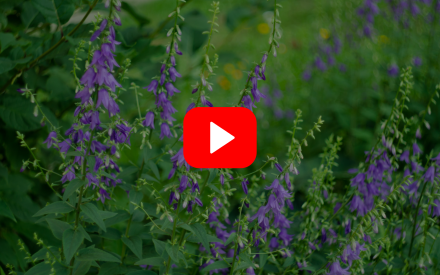 ▶ Watch: Biology and Management of Canada Thistle, Bishop's Goutweed, and Creeping Bellflower
▶ Watch: Biology and Management of Canada Thistle, Bishop's Goutweed, and Creeping Bellflower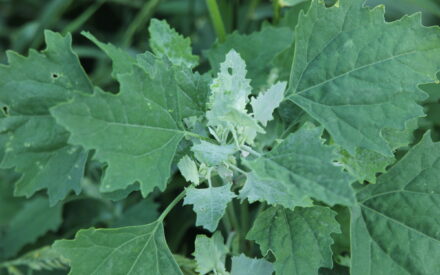 Common Weed Seedlings of the North Central States
Common Weed Seedlings of the North Central States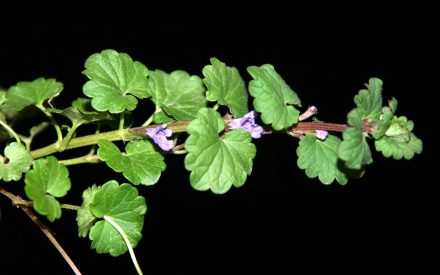 Creeping Charlie, Gleochoma hederaceae
Creeping Charlie, Gleochoma hederaceae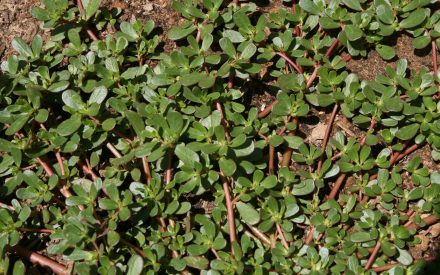 Common Purslane, Portulaca oleracea
Common Purslane, Portulaca oleracea


